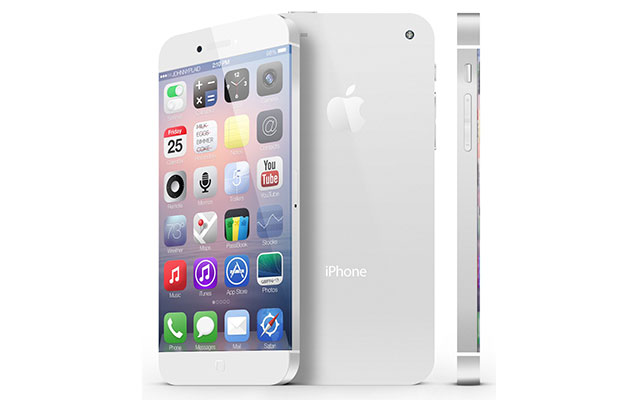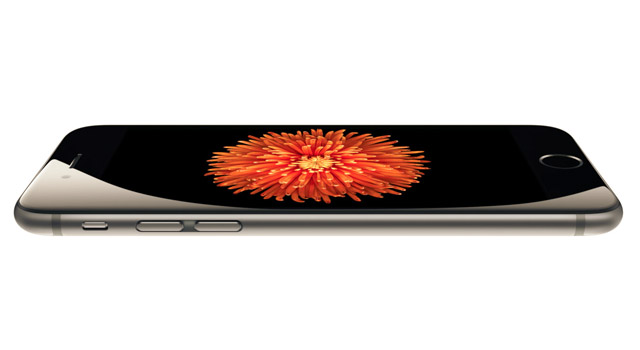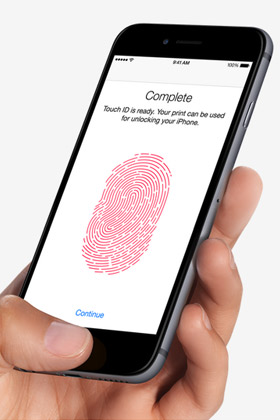
Apple has become the benchmark against which other notebook, tablet and smartphone manufacturers are being compared. It’s not that Apple makes the most technically superior products — although sometimes it does. Rather, it’s because of its relentless focus on detail.
The iPhone 6 is an attempt by Apple to appeal to growing demand for larger screen smartphones. Critics will argue Android- and even Windows Phone-powered devices have already stolen the lead. After all, companies like Nokia, Samsung, Sony and LG have been making bigger screen phones for years. Apple fans will argue the company is simply responding in a measured way to demand, not simply following the pack.
It’s been less than a week since the South African launch of the new iPhone and, judging by the excitement among consumers, the iPhone 6 will be one of the top-selling smartphones this festive season.
But is the excitement really justified?
Apple has two products under the iPhone 6 moniker. The first, the iPhone 6, has a larger (compared to its predecessors) 4,7-inch LCD; the second, the iPhone 6 Plus, has a larger still 5,5-inch display, pushing it into the “phablet” territory of devices like the Samsung Galaxy Note 4.
Both new iPhones offer a significant upgrade from the iPhone 5s. We’ll review iPhone 6 Plus at a later stage. The focus of this review is on the Plus’s smaller sibling, which is likely to prove the more popular of the two.
Sleek design
No Apple product review can start without discussing aesthetics, and with the iPhone 6 there is a lot to talk about. This smartphone takes a big step away from the sharp-edged design favoured on the iPhone 5s to deliver a much smoother and rounded product. In fact, the iPhone 6 looks more like the iPod touch music player than its phone predecessor. The iPhone 6 weighs 129g and is just 6,9mm thick. That’s almost 0,7mm thinner than the already thin iPhone 5s.
The body of the 6 is constructed of anodised aluminum and stainless steel. It feels great to hold, but due to its thinness, rounded corners and smooth aluminum finish, the iPhone 6 is also one of the slipperiest smartphones on the market today. You may want to take out insurance against accidental collisions with concrete floors. At the very least, we’d recommend a cover to add some grip, even if it detracts from the phone’s beautiful lines.

Button layout is largely the same on the iPhone 6, barring the power button which has been moved to the right side, just above the Sim tray, making it easier to press when holding the phone with one hand. The dedicated volume controls and the mute button remain in their usual spot. Apple also kept the Touch ID home button — one of the most consistently accurate biometric devices we have used — though this has added to the bezel size.
The only anomaly on the iPhone 6 in the rear-facing camera, which protrudes slightly on the thinner body. We somehow find it hard to believe the late Steve Jobs would have approved this. It’s not unsightly, but perfectionists — and Jobs was one — will criticise this design decision on what is otherwise flawless smartphone body.
Just 1GB of RAM
One of the biggest criticisms levelled against the iPhone 6 is its hardware. Although it has a 64-bit processor, it’s a dual-core 1,4GHz model helped along with only 1GB of RAM. On paper, these specifications won’t win any awards, but the phone performs remarkably well even when loading processor-intensive apps or games.
The reason Apple is able to pull off such snappy performance is its “walled garden”. As it controls all the hardware, Apple is able to optimise its operating system to get the most out of it.
 Unfortunately, there is still no expandable memory card slot, so users will have to choose carefully whether they want the 16GB, 64GB or 128GB version (Apple no longer produces a 32GB device), though with cloud backup this is arguably less of an issue than it used to be.
Unfortunately, there is still no expandable memory card slot, so users will have to choose carefully whether they want the 16GB, 64GB or 128GB version (Apple no longer produces a 32GB device), though with cloud backup this is arguably less of an issue than it used to be.
The bright and sharp LCD has 1 334 vertical pixels and 750 horizontal pixels for a pixel density of 326ppi — the same as the iPhone 5s. Although we have seen larger pixel densities on many Android devices — the LG G3’s 2K display comes to mind — the iPhone 6 screen looks flawless.
Perhaps it’s the iOS 8.1 user interface, but its hard to find fault with the display.
As a result of the larger screen, Apple has made it easy to reach all the apps on screen without too much effort. Double-tapping the home button brings the top half of the screen down, making it easy to reach all icons with one hand. That’s a case of Apple thinking carefully about the user experience.
Connectivity options on the iPhone 6 are very good, too. Apart from Bluetooth 4.0 and Wi-Fi 802.11 a/b/g/n/ac, the iPhone has built-in near-field communication support, which is crucial for its Apple Pay mobile payments platform (currently only available in the US). For speed junkies, the iPhone 6 supports virtually all the 3G and 4G/LTE bands, including Telkom’s 4G band.
Even though this is the thinnest iPhone Apple has made, the iPhone 6 still manages about a day’s worth of battery life and is on par with the iPhone 5s — which, let’s face it, wasn’t great. It has a 1 810mAh non-removable battery and, depending on your use habits, you’ll probably need to keep your charging cable with you at all times. One really useful improvement to the iPhone 6’s battery is faster charging times.
Camera
Apple’s digital camera technology has made great advances since the early days of the iPhone and with each new device it manages to outshine most of its competitors. The iPhone 6 is no different. Although the iSight camera on the new iPhone has only an 8-megapixel sensor, it produces great-looking photos. The camera has an aperture rating of f/2.2. It has digital image stabilisation making low light shots a little sharper, but it can’t compete with the iPhone 6 Plus, which has optical image stabilisation (OIS), and uses hardware to ensure minimal blur in low light conditions. Apple should have included OIS in the iPhone 6, too, given it’s becoming standard in high-end phones.

Apple has also included a technology called Focus Pixels for fast focusing on a subject. For photos that require light, there is also a true-tone flash, similar to the iPhone 5s’s, that delivers two hues of light to ensure natural looking flash photos. The front-facing camera is a rather pedestrian 1,2-megapixel affair.
But it is without a doubt the video camera capabilities that steal show on the iPhone 6. Apart from 1080p at 60fps video recording capabilities, the iPhone 6 can also shoot slow-motion footage at 240fps at 720p. In this mode, the 6 can turn any boring object into a fascinating subject (see the video below). Photographers who already appreciate the iPhone’s photography capabilities will love what the new one can do with video.
In summary
The question we were asked asked most about the iPhone 6 during our review was whether it’s worth the upgrade. There are many ways to answer that question but, in short, yes, it is.
Although some might dislike the larger screen on the iPhone 6, it does not take much getting used to. And because the iPhone 6 is so thin, the larger screen does not feel as big as some of its rivals with similar screen sizes. Most iPhone users will appreciate the larger size.
The iPhone 6 is available in three colours: silver, gold and grey. The cash price for the 16GB model is R9 899 on Vodacom. This jumps to R12 599 for the 128GB version. The recent fall in the value of the rand is clearly punishing those planning to upgrade. — © 2014 NewsCentral Media
- Review iPhone 6 supplied by Vodacom

